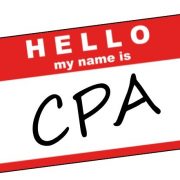Entity Selection After the Tax Cuts and Jobs Act
Determining how your business is organized is often thought of as something you only do when your business is formed. In reality, changes in ownership, the business climate, and the passage of new tax laws are other important times to reevaluate whether your business is ideally organized. With the passage of the Tax Cuts and Jobs Act (TCJA), now is a good time to bring this subject to your attention.
Reading the headlines, one might think that with the top regular corporate income tax rate decreasing 40% (from 35% to 21%), every business should be organized as a regular corporation. However, the analysis is far from that simple. While it is true that the top rate decreased by 40% for some corporations, it is also important to note that many passthrough entities (partnerships and S corporations) also received a significant rate reduction through a newly created deduction. In fact, depending on where the business is located, it may be more beneficial to exit the regular corporate structure and move to a passthrough-type business.
Some factors that favor maintaining or switching to regular corporate status include low state corporate income taxes, a desire and ability of the corporation to maintain earnings in the corporation without paying those out to shareholders, and certain service type businesses (such as doctors, lawyers, accountants, consultants, etc.).
Some factors that favor maintaining or switching to passthrough status include higher state corporate income taxes, a need or desire to distribute most of the earnings on an annual basis, businesses that may be incurring losses, and businesses that hold appreciable assets such as real estate.
The above are just a few of the considerations in determining if your business is organized in the most tax-efficient manner. If you’re at all concerned about your current business and how its structured, we would be happy to discuss how the TCJA impacts your situation and if it makes sense to consider an alternative entity.







